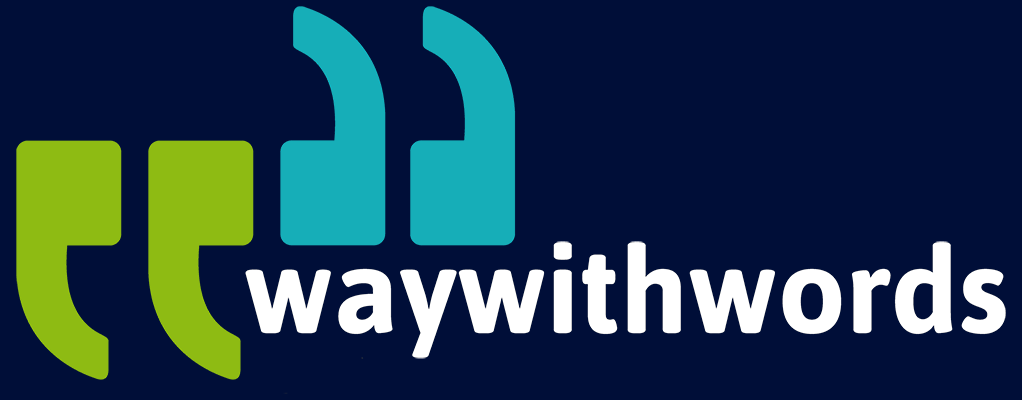Can Clients Request Custom Timestamps for Video Transcription?
Enhancing Transcript Usability with Custom Transcript Formatting
When discussing video transcription, timestamps play a critical role in improving the usability of transcripts. They allow users to link the written transcript with the exact points in the video, making navigation and referencing easier. But can clients ask for custom timestamps? The straightforward answer is yes. Custom timestamps provide valuable flexibility tailored to the project’s unique needs.
This short guide explores how custom transcript formatting through personalised timestamps can greatly improve transcript document readability and usability. It addresses questions many clients have, from media professionals to legal experts, e-learning specialists, and content creators.
Common questions clients ask about custom timestamps include:
- What timestamp styles and intervals can I request for my transcription?
- How do different timestamp choices impact the overall transcript readability?
- Are there any implications for cost or delivery time when requesting custom timestamps?
These questions highlight the importance of understanding the flexibility offered by transcription services and the practical benefits of customised timestamps. Below, we explore ten key topics relating to custom timestamps, their application, and how they support various industries.
10 Key Guidelines About Transcription Timestamps
1. The Flexibility of Custom Timestamps in Video Transcriptions
Custom timestamps provide a level of adaptability that allows clients to get exactly what they need from their transcripts. Unlike fixed, one-size-fits-all timestamping, many transcription providers accommodate requests for timestamps to appear at various intervals or events within the video content.
Clients can ask for timestamps every few seconds, at speaker changes, or linked to visual scene transitions — whatever suits the workflow. For example, timestamps might be placed every 15, 30, or 60 seconds if the transcript will be used alongside video editing or review. Alternatively, timestamps can be tied specifically to changes in speaker, which is especially helpful in multi-person discussions or interviews.
This flexibility is essential because different projects and industries require different timestamping styles to make the transcript most usable. A media professional editing a documentary may want timestamps that match scene cuts for quick navigation. A legal firm preparing court transcripts needs precise timestamps with every speaker change to ensure clarity and accuracy. An educational video creator may prefer timestamps every 20 seconds to allow students to follow sections easily.
Crucially, clients should communicate their preferred timestamp format clearly and early in the process to the transcription service. This avoids misunderstandings and ensures that the transcript document formatting matches the project’s needs from the start. It also minimises the need for costly or time-consuming revisions later.
Key points:
- Clients can specify any timestamp interval or event type, from seconds-based to speaker-based or scene-based.
- Clear upfront instructions improve transcript usability and client satisfaction.
- Custom timestamping makes transcripts more adaptable across different uses and industries.
2. How Custom Timestamps Enhance Usability of Video Content
Custom transcript formatting, especially with tailored timestamps, turns a transcript from a simple text file into an interactive, user-friendly tool. By aligning timestamps with specific points or sections in the video, the transcript becomes easier to navigate and reference.
For video editors, this means faster access to exact moments of dialogue or action, speeding up editing workflows and reducing frustration. For educators and learners, timestamps break up long blocks of text into manageable chunks, improving reading flow and comprehension. It makes reviewing content less daunting and more efficient.
Moreover, timestamps can highlight transitions in content, such as topic shifts or changes in speaker tone, allowing users to jump directly to the parts that matter most. This is particularly useful in lengthy videos such as webinars, lectures, or interviews, where viewers often want to revisit or quote specific segments.
Beyond navigation, timestamps contribute significantly to transcript document readability. Instead of dense paragraphs, the transcript is structured in clearly time-linked sections, making it easier to scan and find information quickly. This structure supports diverse audiences, including those repurposing content for blogs, social media snippets, or training materials.
Custom timestamps also serve as bridges between audio and text, which is vital for accessibility. Viewers with hearing difficulties benefit from transcripts that are not just accurate but well formatted and easy to follow, making the overall video experience inclusive.
Key points:
- Custom timestamps create dynamic, navigable transcripts.
- They improve readability by breaking text into time-linked sections.
- Usability is enhanced for editors, learners, and accessibility needs alike.
3. The Role of Timestamps in Captions, Subtitles, and Searchable Video Content
Timestamps are the foundation for synchronising text with video in captions and subtitles. Without accurate timestamp placement, captions cannot be matched precisely to the audio, leading to confusion and poor user experience.
Custom transcript formatting allows the transcript to be adapted to specific captioning or subtitling standards, such as SRT (SubRip Subtitle) or VTT (Web Video Text Tracks) formats. Different platforms and software require slightly different timestamp styles, so having the option to customise ensures smooth integration and avoids technical hiccups.
Furthermore, timestamped transcripts enable searchable video content. By linking every spoken word or phrase to a precise moment in the video, viewers and content managers can quickly locate key points by searching keywords. This feature is particularly useful for platforms hosting long-form content like conferences, training sessions, or interviews, where finding a particular moment manually would be cumbersome.
Searchable, timestamped transcripts also improve SEO when videos are published online. Search engines can index the transcript content with time-linked references, making video content more discoverable. This benefit is often overlooked but highly valuable for content creators and marketers.
Key points:
- Timestamps synchronise captions/subtitles with audio/video.
- Custom timestamps ensure compatibility with different captioning formats.
- They enable keyword search and improve SEO for video content.

4. Client Requests for Specific Time Intervals and Transcript Formatting
Clients regularly request transcripts with timestamps appearing at intervals tailored to their specific use cases. For instance, educational materials might require timestamps every 20 or 30 seconds to help students easily navigate sections, while podcast transcripts may only need timestamps when the speaker changes.
These requests affect not only the placement of timestamps but also the broader transcript formatting. The way timestamps are presented — font, spacing, alignment — can significantly influence transcript document readability. Clear, consistent formatting allows readers to quickly associate text with time markers, which is vital when transcripts are reviewed or repurposed.
Moreover, some clients ask for timestamps that align with visual or audio cues, such as scene changes or sound effects. This can make transcripts valuable tools for video editors or post-production teams who rely on these markers for timing adjustments or content summaries.
Understanding the client’s primary objective for the transcript ensures that the formatting — including timestamps — serves its purpose effectively. Early collaboration between clients and transcription providers avoids mismatched expectations and ensures a smooth project flow.
Key points:
- Timestamp intervals vary based on the intended use of the transcript.
- Formatting choices around timestamps impact document clarity and usefulness.
- Aligning timestamps with visual/audio cues benefits editing and review processes.
5. How Custom Timestamps Affect Turnaround Time and Costs
Custom transcript formatting, especially when it involves detailed or irregular timestamping, often requires more time and attention to detail from transcriptionists and editors. This can affect project turnaround times compared to standard timestamping practices.
The degree of impact depends on several factors, such as the length and complexity of the video, the number of speakers, and the precision required in timestamp placement. For example, transcripts requiring timestamps at every sentence or every speaker change tend to take longer than those with timestamps every 60 seconds.
Pricing models from transcription providers often reflect this additional effort. Highly detailed timestamping or complex formatting requests may come at a premium. However, modern transcription services that blend automated speech recognition (ASR) with human review have streamlined many of these processes, helping control costs and maintain efficient delivery schedules.
Clients are encouraged to clarify their timestamping needs upfront and discuss potential impacts on cost and delivery. Transparent communication helps avoid surprises and enables better planning. Sometimes, clients may choose to balance between their preferred timestamp precision and project budgets.
Key points:
- Detailed custom timestamps may increase turnaround time and cost.
- Project complexity and length influence the impact on delivery.
- Hybrid transcription workflows help balance accuracy with efficiency.
- Open communication about needs avoids misunderstandings.
6. Examples of Industries That Benefit from Custom Timestamps
Custom timestamps are valuable across many industries, each with unique demands:
- Media and Film: Editors use precise timestamps to locate specific scenes or dialogues quickly, speeding up post-production. Documentaries, news segments, and interviews particularly benefit.
- Legal: Court reporters and law firms require exact timestamps for depositions, hearings, and case reviews. These transcripts must be accurate and easy to cross-reference.
- Education and E-learning: Instructors and learners rely on timestamps aligned with lesson sections, helping students review specific content without searching blindly.
- Corporate Training: Companies use timestamped transcripts for compliance and training sessions, ensuring employees can revisit key points and meet regulatory standards.
- Research: Academic researchers use timestamps to analyse interviews or focus group discussions, linking quotes to specific video moments for data validation.
These examples demonstrate why custom transcript formatting with tailored timestamps is not just convenient but often necessary for professional workflows.
Key points:
- Various industries have different timestamping requirements.
- Custom timestamps support specific workflows and legal standards.
- Understanding sector needs helps tailor transcript formatting appropriately.
7. The Impact of Speaker Identification Combined with Timestamps
Combining speaker labels with timestamps greatly improves the clarity and usability of transcripts, especially in multi-speaker environments. It allows readers to easily distinguish who is speaking and when, which is vital in interviews, panel discussions, or legal proceedings.
Custom transcript formatting can place timestamps either at the beginning of each speaker turn or alongside speaker names for instant recognition. This structure aids readers in following the conversation naturally without confusion.
Such detailed formatting also supports accurate citation and legal referencing, where identifying the exact speaker and time is crucial. It further enhances media production workflows by enabling precise editing and subtitling of individual voices.
Implementing speaker identification requires careful attention during transcription, which can influence costs and turnaround but results in significantly more usable transcripts.
Key points:
- Speaker labels plus timestamps increase transcript clarity.
- Useful for multi-speaker settings like interviews and court proceedings.
- Supports accurate referencing and media production needs.

8. Integration of Custom Timestamps with Video Editing and Captioning Software
Many professional video editing and captioning tools require transcripts formatted with specific timestamp styles. Custom timestamping ensures that transcripts can be imported directly into software like Adobe Premiere Pro, Final Cut Pro, or YouTube’s caption uploader without needing extra conversion or adjustment.
This direct compatibility saves time, reduces errors, and streamlines post-production or publishing workflows. It’s especially important when deadlines are tight, and workflows rely on automation and efficiency.
Transcription providers experienced in media workflows can offer timestamps tailored to match the requirements of popular platforms, making life easier for editors and content creators. It’s best for clients to specify the target software when placing their order.
Key points:
- Custom timestamps can be tailored for software compatibility.
- Supports efficient import into editing and captioning tools.
- Saves time and reduces technical difficulties during post-production.
9. Accessibility Benefits of Custom Transcript Formatting and Timestamps
Accessibility is more than just a buzzword; it’s a legal and ethical necessity in many industries. Custom timestamps enhance accessibility by making transcripts easier to follow, especially for people with hearing impairments who rely on captions or subtitles.
Consistent, well-placed timestamps enable assistive technologies such as screen readers to navigate the transcript smoothly. This improves the user experience and compliance with accessibility standards like the UK’s Equality Act or the Americans with Disabilities Act (ADA).
By investing in custom transcript formatting with clear timestamps, organisations demonstrate commitment to inclusion, which can also broaden their audience and improve reputation.
Key points:
- Custom timestamps support assistive technology use.
- Help meet legal accessibility requirements.
- Enhance user experience for diverse audiences.
10. The Role of Technology in Supporting Custom Transcript Formatting
Modern transcription technology plays a vital role in enabling flexible custom timestamps. Hybrid approaches combine automated speech recognition with human review to produce transcripts that are both accurate and tailored to client instructions.
Clients can provide detailed timestamp preferences digitally, allowing transcription teams to work efficiently and accurately. AI helps generate initial timestamps quickly, while humans ensure that formatting, speaker identification, and interval placements meet exact standards.
This technology-driven approach reduces turnaround times and keeps costs competitive while offering the flexibility clients need for custom transcript formatting.
Key points:
- Hybrid AI-human workflows support flexible timestamping.
- Digital instructions allow precise client control over formatting.
- Technology improves speed and accuracy of custom transcripts.
Five Useful Tips for Requesting Custom Timestamps in Transcripts
- Be clear and specific about your needs. Decide whether you want timestamps by time intervals, speaker changes, or scene transitions.
- Think about how the transcript will be used. Editing, legal review, or e-learning all have different requirements.
- Request samples to understand formatting styles. Reviewing examples helps clarify expectations.
- Verify timestamp compatibility with your software. Ensure your chosen format works with your video editing or captioning tools.
- Discuss budget and timing upfront. Understand how your requests affect costs and delivery time to plan accordingly.
Custom timestamps in video transcription are a versatile feature that adds significant value across many fields. By choosing timestamp styles that suit your workflow, whether through interval-based, speaker-based, or scene-based formats, you transform a transcript into a functional, easy-to-navigate resource.
We covered the flexibility of custom timestamps, their importance in captions and searchable content, effects on turnaround and costs, and industry-specific needs. Combined speaker identification and timestamping further enhance transcript clarity. The right technology ensures these customisations are delivered efficiently.
The main takeaway: understand your transcript’s purpose first and communicate your timestamp preferences clearly. This simple step ensures your transcript is tailored to your needs, saving time and cost while maximising usefulness.
If you require precise, reliable transcripts with custom transcript formatting, working with a provider skilled in both technology and human transcription is key to a successful project.
Further Transcription Resources
Timecode (Wikipedia) – Explains timecodes and how they are used in video and audio transcription for synchronisation and navigation.
Way With Words: Transcription Services – Way With Words employs advanced technology and highly skilled transcribers to overcome common challenges in transcription, ensuring that clients receive accurate and reliable transcripts regardless of the complexity of their audio files.
